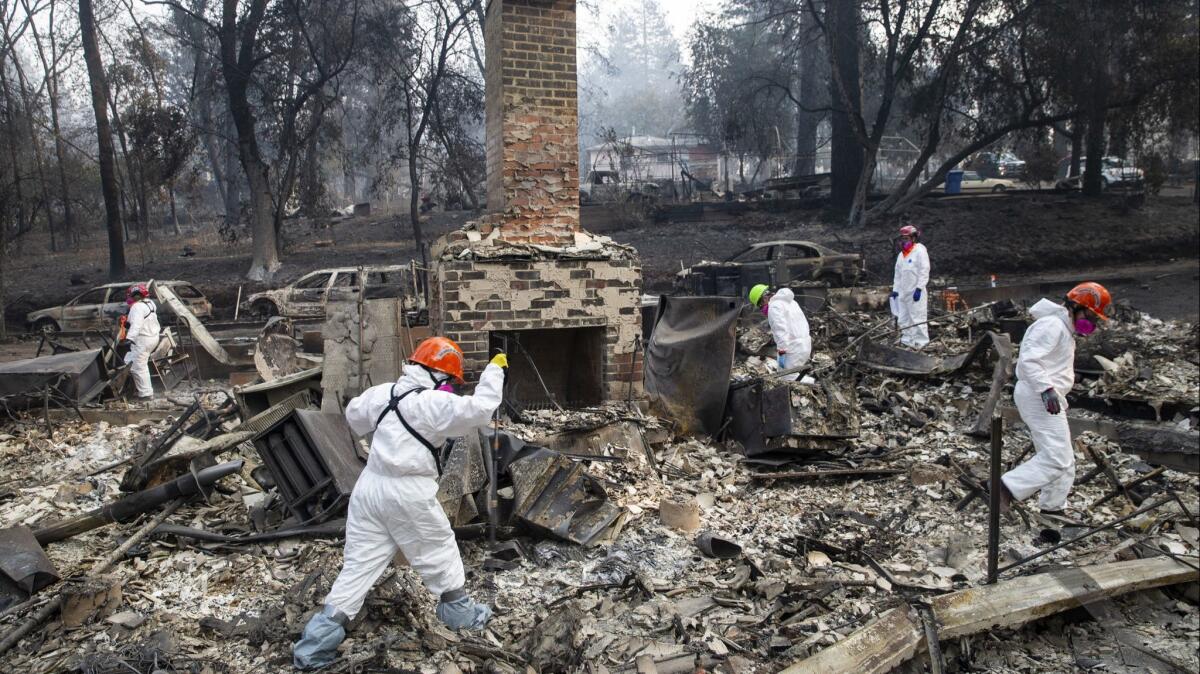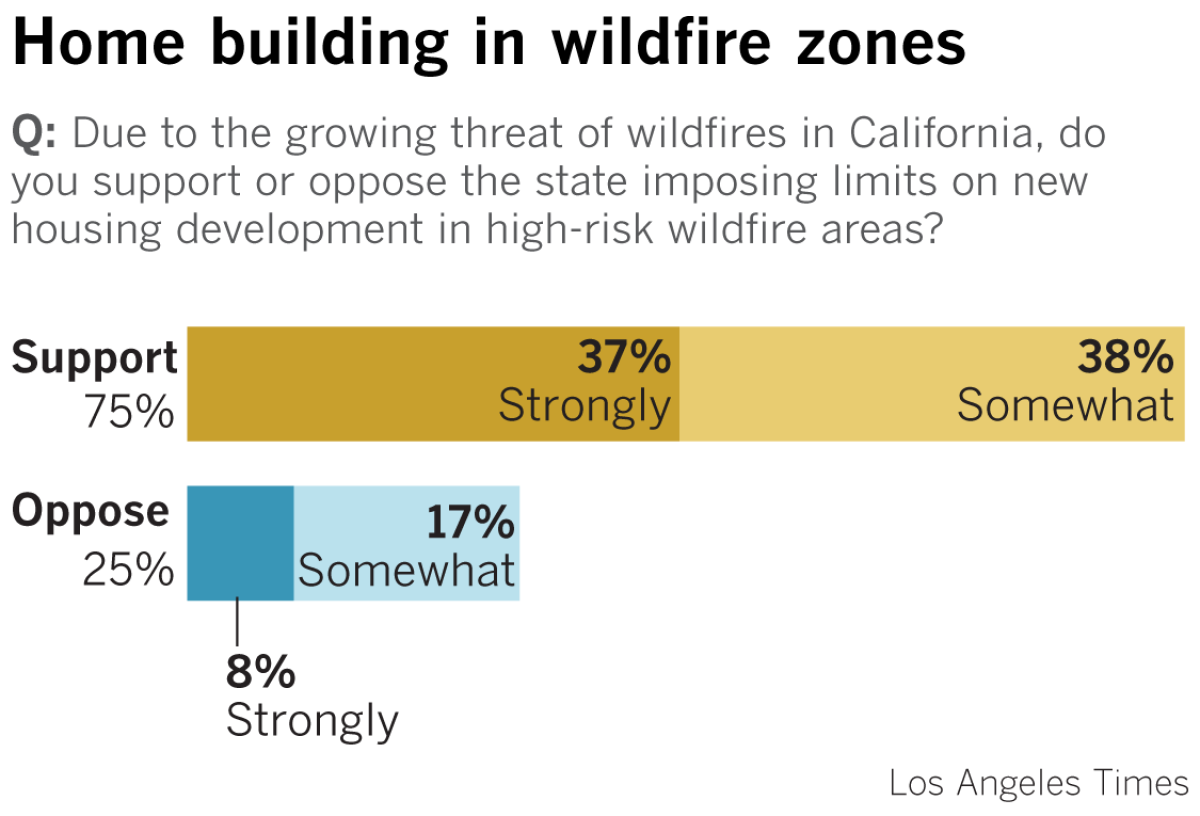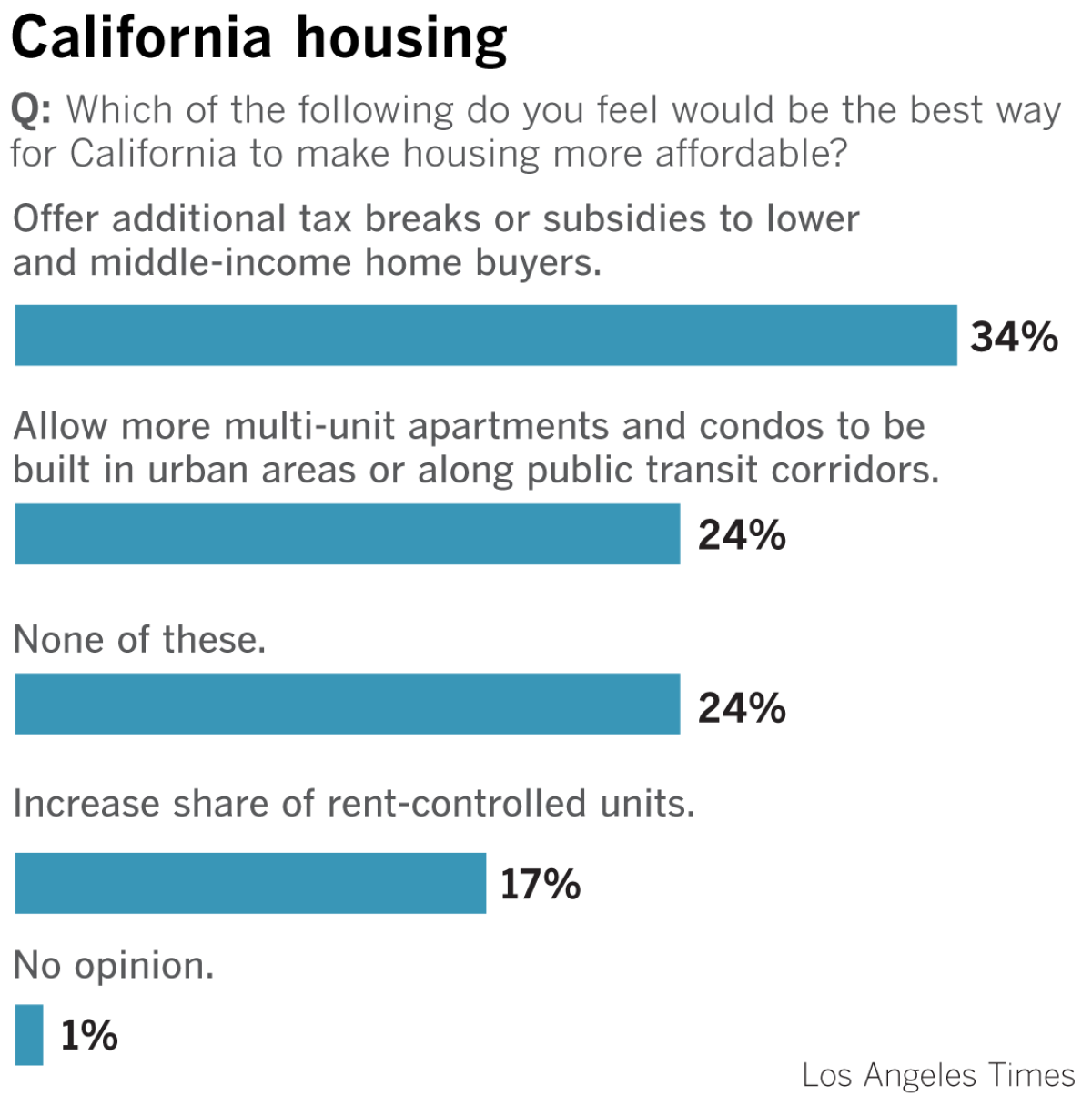More homes in wildfire zones? High number of Californians say no, poll says

- Share via
Reporting from Sacramento — Three quarters of California voters believe the state should restrain home building in areas at high risk of wildfires, a new survey has found.
The UC Berkeley Institute of Governmental Studies Poll, prepared for the Times, shows bipartisan support for such restrictions after deadly fires wiped out tens of thousands of homes across the state in the last two years.
“The voters think there should be limits,” said Mark DiCamillo, director of the Berkeley IGS Poll.
The survey revealed broad backing across party lines, demographic groups and all regions in California for restricting growth in wildfire zones. Nearly 85% of Democrats support doing so compared with 57% of Republicans and 72% of independent voters.
At least 66% of respondents in every region of the state back the idea, including the non-Bay Area northern section. This includes the area surrounding Paradise, which was almost entirely destroyed in last fall’s Camp fire and where many homeowners have said they hope to rebuild.
Overall, 37% of voters surveyed said they supported strongly limiting new home building in wildfire areas with an additional 38% saying they somewhat supported the idea.

Despite voters’ willingness to restrict growth in wildfire areas, Gov. Gavin Newsom and lawmakers have not openly discussed the idea among other options to prevent destructive infernos. State leaders have instead focused their discussions on utility companies’ financial responsibility for the blazes, how to pay for damages from wildfires and cutting back vegetation and other ways to manage the state’s forests.
Last year Ken Pimlott, the recently retired head of the California Department of Forestry and Fire Protection, said that government should consider stopping home building in threatened communities because of the substantial loss of property and lives.
But in an interview with the Associated Press this spring, Newsom rejected it.
“There’s something that is truly Californian about the wilderness and the wild and pioneering spirit,” Newsom said. “I’m not advocating for no” building.
Natural disaster is inevitable in California. And it can define a governor’s legacy »
Stanford University’s Michael Wara, who serves on a state wildfire commission, said the scale of recent fires is influencing how Californians think about development, even those whose property is safe.
“They wake up and go outside and they can’t breathe and there’s ash on their car,” said Wara, who directs the school’s climate and energy policy program. “It’s not something you read about in the newspaper. It’s something you experience.”
But Wara said any decision to limit growth in fire zones remains politically difficult. People who own land or might want to build in those areas strongly prefer to maintain the status quo.
“This is an issue where there’s concentrated very powerful interests that have a lot to lose by changing the rules,” he said.
It’s also possible that voters might support the idea for limiting growth but not the details of what a plan might look like, said DiCamillo, the pollster. A recent Cal Fire report said 1 in 4 Californians live in areas considered at high risk for wildfires, including in suburban Southern California and the Bay Area.
People who live in parts of Marin County may not realize they reside in one of these zones when answering that question, he said. “They’re probably thinking about all these rural areas.”
The Berkeley poll also examined other housing issues and found less consensus among voters than that of limiting growth in wildfire areas. The survey offered respondents three proposed solutions for making housing more affordable: offering more tax breaks or subsidies for lower and middle-income homebuyers; allowing more apartment or condominium construction along mass transit routes; or increasing the share of apartments with rent control.

None of the three answers achieved close to majority support. Additional tax breaks ranked highest with 34% backing. Nearly a quarter of those surveyed did not agree with any of the options.
Voters were evenly divided over whether the state should take a more aggressive role on housing issues and require cities and counties to build more homes in their communities. The poll found 51% in support of the idea.
The lack of agreement on how to address California’s housing problems, including the state government’s responsibility, could help explain why lawmakers recently turned away major housing legislation, DiCamillo said. Last month, legislators shelved Senate Bill 50, which would have boosted building near transit lines and in single-family home neighborhoods. They also blocked and weakened measures that aimed to add protections for renters.
Addressing the housing problem with a specific solution, DiCamillo said, is “the big dilemma for the Legislature. They might not have the public behind them when they do it.”
The survey did find a split among age and demographic groups on whether the state should take a larger role on expediting more housing. Nearly two-thirds of those ages 18 to 29 wanted more state intervention compared with 45% of those 65 and older. Similarly, more than 60% of Latinos, blacks and Asians backed a more expansive state role, compared with 45% of whites.
The online survey of 4,435 California voters took place June 4 to 10 and has an overall margin of sampling error of plus or minus 2.5%.
More to Read
Get the L.A. Times Politics newsletter
Deeply reported insights into legislation, politics and policy from Sacramento, Washington and beyond. In your inbox twice per week.
You may occasionally receive promotional content from the Los Angeles Times.









